Miriam Raftery
East County Magazine
Sat, 01 May 2010 18:14 EDT
San Diego's East County - At 8:15 p.m. on Thursday, April 29, East County Magazine
columnist Dennis Richardson of Lakeside reports spotting a large, white
object "burning across the skies" from south to north in the western
sky. "It started falling apart towards the end of my field of vision,"
he said, adding that smaller pieces "flew away in a cone-shaped tail as
they burned up more quickly and disappeared."
A larger piece traveled on and disappeared behind clouds, said
Richardson, who believed the object could be space debris, a meteorite,
or shooting star.
ECM asked astronomy writer Dennis Mammana
(www.dennismamammana.com; www.facebook.com/DennisMammana), author of
the syndicated "Stargazer" column, if he was aware of any meteor
showers or other celestial phenomenon that evening.
"This sounds like a meteor, albeit a very bright one," he
replied. "It might have been a piece of natural material or a piece of
manmade space debris. From the description of its long tail and the
early hour, it sounds like an "earthgrazer" which falls tangentially
through the Earth's atmosphere and burns for a long time."
Such occurrences happen more frequently than most people are aware," Mammana added.
Coincidentally, the Space Station passed over our region and was reportedly visible here one night later.
Astronomers
analyzing debris from a comet that broke apart last summer spied pieces
as small as smoke-sized particles and as large as football-field-sized
fragments. But it's the material they didn't see that has aroused their
curiosity.
Tracking the doomed comet, named LINEAR, the Hubble telescope and the
Very Large Telescope in Chile found tiny particles that made up the
2,000-mile-long dust tail and 16 large fragments, some as wide as 330
feet. But the telescopes didn't detect any intermediate-sized pieces.
If they exist, then the fundamental building blocks that comprised
LINEAR's nucleus may be somewhat smaller than current theories suggest.
The Hubble picture shows that that LINEAR's nucleus has been reduced to
a shower of glowing "mini-comets" resembling the fiery fragments from
an exploding aerial firework. This picture was taken with Hubble's Wide
Field Planetary Camera 2 on August 5, 2000, when the comet was at a
distance of 64 million miles (102 million kilometers) from Earth.
Object Name:
Comet LINEAR
Acknowledgement:
*Credit:* NASA [ http://www.nasa.gov/] and Hal Weaver (The Johns Hopkins University)
Fast Facts:
Technical facts about this news release: About this Object Object
Name: Comet LINEAR; C/1999 S4; (LINEARLincoln Laboratory Near-Earth
Asteroid Research) Object Description: Comet Distance : The comet's
distance to the Sun at closest approach was 71 million miles (114
million km). About the Data Instrument: WFPC2; STIS Exposure Dates:
July & August 2000 Exposure Time: ~ 2 hours Filters: WFPC2: F675W
(R); STIS: F28X50LP Principal Astronomers: Comet LINEAR investigation
team: H. Weaver and P. Feldman (JHU), M. A'Hearn (Univ. of Maryland),
C. Arpigny (Liege Univ.), J. Bauer (Univ. of Hawaii), M. Combi (Univ.
of Michigan), J. Davies (Joint Astronomy Centre), M. Festou
(Observatoire Midi-Pyrenees), M. Keesey (JPL), P. Lamy (Laboratoire
d'Astronomie Spatiale), C. Lisse (STScI), B. Marsden (SAO), K. Meech
(Univ. of Hawaii), Z. Sekanina (JPL) , I. Toth (Konkoly Observatory) ,
G.-P. Tozzi (Arcetri Observatory), D. Yeomans (JPL).
Brian Vike
The Vike Factor (Into the Paranormal)
Mon, 03 May 2010 18:10 EDT
Posted: May 2, 2010
Date: May 1, 2010
Time: Evening.
Tonight while driving to pick up my grandson near Appleton, Wisconsin I
saw a bluish hazy object falling from the sky. I was passing a vehicle
on a incline, on a curve and I noticed a light and it was bluish and
hazy or foggy all around it and it was falling from the sky, not
straight down, but like on a curve. I could not keep my eyes on it all
the time, because I was passing on a curve and all alone in my vehicle
at the time. I was wondering if you knew what this could be?
Albuquerque - It's a bird. It's a plane. It's a meteorite.
Or is it?
Residents in one northeast Albuquerque neighborhood reported seeing a
bright flash in the sky Monday night and that a meteorite landed in
front of their homes.
"Very bright like day turning to night," said Janice Marshall.
The mystery on La Fiesta Dr. off of Osuna began at 11:30 p.m.
"Well, the electronics went off in the house too," Marshall said.
When Marshall went outside to investigate along with other neighbors, they said they found evidence of a meteorite.
"You could see white patches going up the street," added Marshall.
University of New Mexico Professor Horton Newsom, who works as
a researcher for the Institute of Meteoritics, went to check out
whatever it was that people in Marshall's neighborhood thought had
fallen from the sky.
"Very, very rare," said Newsom. "Maybe one (meteorite sightings) in a few hundred turns out to be real."
It turns out that bright flash that startled so many residents on La Fiesta came from above. Just not where they thought.
"Unfortunately, I don't think it's a meteorite," said Newsom.
So what is it?
Remember what Marshall said about her electronics losing power in her house?
Marshall and her neighbors thought the meteorite had hit some
equipment on a power line on the way down. They found pieces of it on
the street.
But a PNM spokesperson said that kind of equipment, which
protects power lines from lightning strikes breaks on occasion. When it
does break, it causes a flash of light and a temporary loss of power.
The PNM spokesperson said that's exactly what happened just after 11:30 Monday night.
Prof. Newsom thinks the rocks on La Fiesta were actually volcanic; commonly used for landscaping.
"There's no visible metal in these," said Newsom. "This is pumice that fell out of a truck I'm afraid."
For residents on La Fiesta Dr.: mystery solved.
"I didn't know what it was," said Marshall.
A lot of people also thought they saw a meteor just after 5 o'clock Monday morning, and they were right.
Video from Sandia National Laboratories and a different sky
camera in El Paso shows that meteor flying across the sky over New
Mexico.
There were actually three meteors visible, but that one was the most prominent.
It could be seen for four seconds.
Cincinnati -- It moved faster than a bottle rocket, was smaller than an airplane and didn't fall from the sky.
Beyond that, the question of what was caught on a News 5 skycam at the end of Tuesday's 11 p.m. newscast remains unanswered.
A couple watching the newscast first alerted the station to what they saw in the closing shot before the Tonight Show.
In the few moments it appeared on screen, the streak of light appeared
from behind the Great American Tower and shot in a straight line up and
out of screen to the upper right.
Watch Video - Strange Light Appears In Sky
"Huh. That's a strange direction for an object to be moving," Dean Regas said.
Regas knows a few things about moving objects in the air. He's the Outreach Astronomer at the Cincinnati Observatory.
"In all the other videos that we've seen of meteor strikes and
fireballs going through the sky, it's never been at that trajectory,
it's usually the other way," he said.
Because of the camera angle, it was initially hard to tell if
the object was coming from the ground in Newport or Bellevue or if it
was coming from over the horizon of the hill beyond the riverfront.
But upon further enhancement, it appears in the sky between the hill and the camera, not beyond the hill.
The Reds said it didn't come from the stadium because Tuesday's
game was long over by 11:30 p.m., so no fireworks would have been ready
to fire.
"A UFO, that's what I'll call it. That's my official decree, official judgement," Regas joked.
Halley's Comet was last seen passing near the earth 24 years ago.
The Comet passes through our inner solar system every 76 years. As most
of us having an interest in astronomy know that the Halley's Comet is a
huge piece of rock orbiting our sun at a very high speed. The reason
that the Halley's Comet is called a Comet and not a planet is that it
travels at speeds much greater than planets. Planets travel at a
relatively slow speed whereas comets travel at extremely fast speeds
leaving behind a trail of meteors and meteorites that are usually
called the comet's cosmic dust.
There is still a long time before the Halley's Comet can be
seen again, but nowadays the comet is at such a position (far away from
the earth obviously) that its cosmic dust can be seen in form of some
meteor showers near the earth. The shower is expected to become visible
3 to 4 days before and after May 6th.
The meteor shower is expected to show meteors at the
rate of 40 per hour, but due to the awkward position of the shower and
the presence of the moon's light the full rate might not be visible to
stargazers. It is expected that for people living north of the equator
the meteor shower would be visible at the southeast horizon. For
residents of North America the angle of meteor visibility would be 26
degrees north latitude and 35 degrees latitude. For people who live in
the southern hemisphere there is going to be maximum visibility.
Sullivan - The National Weather Service says it received a number of
reports of possible meteor sightings early Monday morning.
The weather service says its Sullivan office got a call from
Rock County 911 dispatchers about sightings by two citizens and a
sheriff's deputy. They said a bright green or blue light, followed by a
flash could be seen north of Janesville around 4:00 a.m.
Dane County dispatchers also received a call with a similar
description. The weather service says it didn't pick anything up on
radar.
And, the National Weather Service office in Duluth, Minn.,
received a call from the Iron County Sheriff's Department reporting a
citizen who saw a bright flash and then "something glowing in the
woods."
Last month, a meteor went streaking across the
Midwest. Several cameras captured the huge streak of light in the sky
and a few people have found pieces of rock that may have been from the
meteor.
So far no images from this latest reported sighting have been released.
Source: WREX/Associated Press
Frank Roylance
The Baltimore Sun
Mon, 10 May 2010 18:36 EDT
Reports
are beginning to arrive about what sounds like a rather spectacular
fireball meteor over Central Maryland just before dawn Monday morning.
Not sure how many people would be outside to see this at such an hour,
but let's see what other accounts might come in.
Here's what we have so far.
"I had a major meteorite sighting over Cockeysville at 0445 hrs this
AM. Large green fireball with pieces breaking off and burning off. From
the northwest to the southeast. Way cool- first one ever!" - John
Selway, White Hall, Md.
"I was headed east on Rt. 23 (East West Highway) in Forest
Hill this morning at about 4:40am. When I reached the intersection at
Conowingo Road, I noticed an amazing bright streak of green light
falling diagonally through the sky. I lost sight of it as it appeared
to go behind the buildings at the intersection. I've never seen
anything like it in my life. When I arrived at work, I immediately
started searching on atmospheric sightings and came across your blog.
Can a meteor have this type of color?" -Michele
Anyone else? Please leave a comment. It's important to
include details about where you were, the time, the direction of the
meteor's movement, its altitude above the horizon at the beginning and
the end of the observation (in degrees, if possible; the horizon is
zero, straight up is 90 degrees), its color and anything else you can
remember. Also try to remember the duration of the event. Count
"Mississippi 1, Mississippi 2, Mississippi 3" to estimate seconds).
Meteor scientists and meteorite hunters can use the
information to calculate the meteor's direction, altitude, and the
rough location of any parts of it that may have reached the surface.
FOX Chicago News
Mon, 10 May 2010 12:25 EDT
Chicago - Sightings of a bright orange and green light moving slowly
across the skies early Monday morning has people in Illinois, Wisconsin
and Indiana talking about a possible meteor.
The National Weather Service confirmed they received calls from residents in Wisconsin early Monday.
Callers to WGN radio describing the light hailed from Mokena,
Orland Park, Matteson, Michigan City, Belvidere, Peoria and Wisconsin.
The callers said around 4 or 4:10 a.m., they saw the big orange and
green light streak across the sky.
Witnesses described it as looking like a Roman candle. One said it was moving west to east.
Some residents in Bolingbrook said the light woke them up.
FOX Chicago contacted NASA to see if they had any information
about the event, but they had no conclusive answers at the time. The
Geological Society said even if there was a meteor, if it was too small
to register on their measures, they wouldn't be able to confirm it.
A recent MSNBC article reported remnants of Halley's Comet
could be visible this year, 24 years after it last moved through the
solar system. Sightings of the remnant should have peaked last
Thursday, but could be seen three to four days before or after that
day.
Three weeks ago, a meteor lit up the night skies over several Midwestern states, including Illinois. Pieces of that meteorite have been found in Wisconsin.
Our
sun may have stolen the vast majority of its comets from other stars.
The theft could explain the puzzling profusion of objects in a huge
reservoir surrounding the sun called the Oort cloud.
The Oort cloud is a collection of comets thought to orbit the
sun in a roughly spherical halo about 50,000 times as far from the sun
as Earth - at the outer edge of the solar system. How did the comets
get there? In the standard picture, they formed much closer to the sun,
then migrated outward in a two-stage process.
First, the gravity of the giant planets flung them into
elongated orbits to form a population called the scattered disc.
Objects in the scattered disc come about as close to the sun as
Neptune, but venture dozens of times further out, to more than 1000
times the Earth-sun distance. That far from the sun, the gravitational
pull of the galaxy becomes significant, so many of the scattered-disc
objects get pulled out to populate the Oort cloud.
There is a problem with this picture, however. Simulations
have long predicted that this process could only populate the Oort
cloud with 10 times as many comets as are currently in the scattered
disc, while estimates based on observed comets suggest the ratio is
more like 700 to 1.
"This nice, beautiful picture we have been developing
for the last 25 years or so just crashes and burns," Hal Levison of the
Southwest Research Institute in Boulder, Colorado, said at a meeting of
the American Astronomical Society's Division on Dynamical Astronomy in
Boston last week.
Levison and his colleagues say many of the Oort-cloud objects
may have been stolen from other stars born in the same stellar nursery
as the sun. Most stars like the sun form in clusters of between 10 and
1000 members. According to the team's simulations, encounters between
stars in this crowded environment tend to disturb their scattered discs
and detach objects from them, creating a reservoir of free-floating
comets.
When stars later leave the cluster, some of these objects move
along with them, getting captured into wide, Oort cloud-like orbits.
"They head off in the same direction together and eventually become
bound," says Levison. That could explain the high number of Oort-cloud
objects in our solar system. If most of the cloud's members were
captured from other stars, then famous comets like Halley and
Hale-Bopp, whose trajectories suggest they once resided in the Oort
cloud, probably were too, Levison says.
Brian Marsden of the Harvard-Smithsonian Center for
Astrophysics in Cambridge, Massachusetts, who was not involved in the
study, says it is too soon to tell whether there really is an
overabundance of Oort-cloud objects, since observations are not good
enough to provide very precise estimates of the population there. But
if the overabundance persists with better observations, the capture
scenario could explain it, he says. "It's a very interesting idea and
it might work."
A
new infrared image from NASA's Wide-field Infrared Survey Explorer, or
WISE, showcases the Tadpole nebula, a star-forming hub in the Auriga
constellation about 12,000 light-years from Earth. As WISE scanned the
sky, capturing this mosaic of stitched-together frames, it happened to
catch an asteroid in our solar system passing by.
The asteroid, called 1719 Jens, left tracks across the image,
seen as a line of yellow-green dots in the boxes near center. A second
asteroid was also observed cruising by, as highlighted in the boxes
near the upper left (the larger boxes are blown-up versions of the
smaller ones).
But that's not all that WISE caught in this busy image - two
satellites orbiting above WISE (highlighted in the ovals) streak
through the image, appearing as faint green trails. The apparent motion
of asteroids is slower than satellites because asteroids are much more
distant, and thus appear as dots that move from one WISE frame to the
next, rather than streaks in a single frame.
This Tadpole region is chock full of stars as young as
only a million years old - infants in stellar terms - and masses over
10 times that of our sun. It is called the Tadpole nebula because the
masses of hot, young stars are blasting out ultraviolet radiation that
has etched the gas into two tadpole-shaped pillars, called Sim 129 and
Sim 130.
These "tadpoles" appear as the yellow squiggles near the
center of the frame. The knotted regions at their heads are likely to
contain new young stars. WISE's infrared vision is helping to ferret
out hidden stars such as these.
The 1719 Jens asteroid, discovered in 1950, orbits in the main
asteroid belt between Mars and Jupiter. The space rock, which has a
diameter of 19 kilometers (12 miles), rotates every 5.9 hours and
orbits the sun every 4.3 years.
Twenty-five frames of the region, taken at all four of the
wavelengths detected by WISE, were combined into this one image. The
space telescope
caught 1719 Jens in 11 successive frames. Infrared light of 3.4
microns is color-coded blue: 4.6-micron light is cyan; 12-micron-light
is green; and 22-micron light is red.
WISE is an all-sky survey, snapping pictures of the whole sky,
including everything from asteroids to stars to powerful, distant
galaxies.
Gerry Warner
Cranbrook Daily Townsman
Sat, 15 May 2010 20:44 EDT
Did a meteorite fly over Cranbrook Wednesday night? Local resident
Jennifer Doering is sure one did because she saw it around 9:45 p.m.
and even saw it explode as it came close to earth.
Doering and her boyfriend were driving in their car when their
attention was suddenly drawn to a bright light high overhead between
the Highcrest Trailer court and Kootenay Orchards Elementary School.
"All of a sudden I could see this bright, bright light. It was
like white lightning and it was really wide. Then it blew apart and it
went more into a red, orangey colour and it appeared to land
somewhere."
The pair drove around to see if they could find remnants of
the exploded meteorite, which appeared to come down in the 10th Street
and 14th Avenue area not too far from Parkland Middle School. But no
remnants or extra-terrestrial material was found leaving Doering
wondering what she really saw.
"It was as low as a helicopter would go. That's why it had to land somewhere in town."
RCMP spokesman Eric Ausman said no calls about meteorites or
other unidentified flying objects were received at the detachment the
night Doering saw the meteorite. Ausman said he was out walking his dog
the same night not far from where Doering saw the space object, but he
saw nothing unusual at all.
"We didn't get any reports about anything close to that," he said.
However the website of the American Meteor Society said some weak
meteor showers including the Nu Cygnids, the Eta Lyrids, and the
Antihelion radiant were due to make an appearance over this part of
B.C. and the states south of the province in mid-May.
"As seen from the mid-Northern Hemisphere, one would expect to
see approximately six sporadic meteors per hour during the last hour
before dawn as seen from rural observing sites. Evening rates would be
near one per hour."
If anyone else saw a strange celestial object in the sky
Wednesday, please call the Daily Townsman at 426-5201 Ext. 220 or email
gerry@dailytownsman.com.
Two more reports have come in about a meteorite seen over the Cranbrook-Kimberley area around 9:45 p.m May 12, but it's no longer sure if the celestial object was a meteorite or a comet.
Whatever the case, the sightings by local earth-bound observers are
consistent and indicate strongly that some sort of unidentified flying
object flew over the region last Wednesday.
Jordan Eliason, a project manager with JSL Forum, said he came
out of a meeting in Kimberley the evening of May 12 and while talking
outside the building saw the meteorite brighten up the sky towards the
ski hill.
"It is most likely that this was a large meteorite high up in
the atmosphere. It was the second one I had seen so bright in my life.
(It had) a whitish, yellow tail and then broke apart into many small
pieces."
And Eliason wasn't the only one to see a strange flying object
that night. Joan Kaun called the Daily Townsman to say she saw it too
and her observations matched the previous two.
"We were out in our hot tub (in the Southview area) facing
north and looking over the roof of the house and saw a flash of light
and it appeared to split in two."
Kaun said the object appeared to be going in an east to west direction and it was all over in less than two seconds.
She said it occurred around 9:30 in the evening which is consistent with the other meteorite reports.
Asked if it came close to the ground as one of the earlier
observers said, Kaun said, "from my perspective, it disappeared before
it got that far, but it was very bright."
Jennifer Doering, the first observer to report the meteorite
May 13, said she thought the meteorite might have came to the ground in
the South Hill area around Kootenay Orchards Elementary School. She
also described a very bright white light and that part of the
high-flying object appeared to explode.
According to the American Meteor Society, most meteor showers have their origins with comets.
Every time a comet swings by the sun, it produces great amounts
of meteoroid-size particles that eventually spread out along the entire
orbit of the comet to form a meteoroid stream or "tail."
When the earth passes through this comet tail we experience a
meteor shower with the tiny pieces of the comet lighting up in a white
stream as they encounter the earth's atmosphere.
Few of these tiny pieces that are largely made up of dust or
ice ever hit the ground, but when they do they're called a meteor. So
what was it, comet or meteor? If you also saw last Wednesday's
celestial phenomena, call this reporter at: 426-5201 Ext. 220 or email
gerry@dailytownsman.com.
We rarely see a good comet when it's at its best. Most comets are
brightest when nearest the Sun - just when they're most likely to be
hidden in the Sun's glare or below the sunrise or sunset horizon.
That's the situation this spring with Comet C/2009 R1
(McNaught). Even so, observers in the Northern Hemisphere should be
able to pick it up with telescopes, and possibly binoculars, just
before dawn for at least part of June, during its runup in brightness.
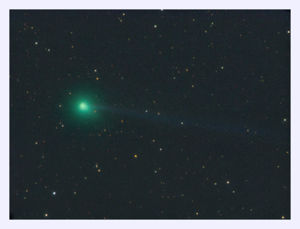
© Michael Jaeger
On
May 19th, when Michael Jaeger shot this image from Austria, Comet
C/2009 R1 was 8th magnitude and showing the characteristic green comet
color in large telescopes. Note the thin blue gas tail. Click image for
larger view.
On
May 19th, when Michael Jaeger shot this image from Austria, Comet
C/2009 R1 was 8th magnitude and showing the characteristic green comet
color in large telescopes. Note the thin blue gas tail. Click image for
larger view.
And in fact, the comet is turning out to be 1 or 2 magnitudes brighter that we predicted in the June Sky & Telescope (page 60). Let's hope this behavior keeps up!
Comet Timetable
As of mid-May the comet was about magnitude 8.5 (compared to the 10 we
originally predicted), as it rose about an hour before the start of
astronomical twilight for mid-northern observers. Throughout this
apparition it will be low in the east or northeast when dawn begins to
brighten.
May 31st will find McNaught, now hopefully 6th or 7th
magnitude, passing 2½° southeast of the 2nd-magnitude star Beta
Andromedae. At the beginning of astronomical twilight it's a
respectable 20° up as seen by observers at 40° north latitude. But the
waning gibbous Moon will brighten the sky.
On the morning of June 5th the comet skims just north of the large, loose open cluster NGC 752. On June 6th and 7th
it's within about 2° of the 2nd-magnitude double star Gamma Andromedae.
The Moon is much thinner then, but also closer to the comet.
Mid-June is when Comet McNaught should be most
interesting, offering the best compromise between its increasing
brightness and its decreasing altitude at the start of dawn. Moreover,
the sky will be free of moonlight.
The helpful conjunctions continue as the comet passes about 1° north of the open cluster M34 in Perseus on the morning of June 10th, and 3° south of 1.8-magnitude Mirfak (Alpha Persei) on the 13th. It's still about 15° high in the northeast as the sky starts to grow light on June 15th, but it appears roughly 1° lower every day after that. The comet passes zero-magnitude Capella on the 21st, and it's very low by the 24th,
when it passes 2nd-magnitude Beta Aurigae. By now Comet McNaught may be
as bright as 4th or 5th magnitude, but moonlight is returning.
The comet will be lost to view by June's end - just before it
reaches perihelion on July 2nd, 0.405 astronomical unit from the Sun.
It remains far from Earth throughout this apparition, never venturing
closer than 1.135 a.u. (in mid-June). After perihelion it will fade
rapidly as it heads to the far-southern sky.
The comet is approaching on a hyperbolic orbit, which means
that it's making its first trip in from the Oort Cloud. So its
brightness is even less predictable than usual. Will it flare
unexpectedly or perhaps fizzle right out?
Print out our map, plan where and when to look (find when astronomical twilight begins at your location using our almanac, and don't forget to check the Daylight Saving Time box if necessary), and see for yourself.
Check on recent pictures and light curve.
Many McNaughts
This particular Comet McNaught is one of 54 (and counting)
named for Robert H. McNaught of Australia's Siding Spring Observatory.
He works in the Siding Spring Survey, funded by NASA to record large
swaths of sky to find potentially hazardous near-Earth objects. The
survey also turns up many other moving objects. McNaught found this
comet (which will never come near Earth) at 17th magnitude on an image
taken last September 9th. Pre-discovery images quickly established its
orbit.
The most famous of the Comet McNaughts is C/2006 P1, also
known as the Great Comet of 2007. It was an easy naked-eye sight when
passing near the Sun in mid-January of that year, shining at magnitude
- 5 or - 6, and in the following days it flung a gigantic, multi-banded
tail across the Southern Hemisphere's evening sky.
Agence France-Presse
Thu, 20 May 2010 17:11 EDT
Sydney
- Australian scientists have discovered a crater deep beneath the Timor
Sea made during a heavy meteor storm which may have altered the Earth's
climate, the lead researcher said Thursday.
Australian National University archaeologist Andrew Glikson
said seismic activity led experts to the Mount Ashmore 1B site, and a
study of fragments showed a large meteorite hit just before the Earth's
temperatures plunged.
"The identification of microstructural and chemical features
in drill fragments taken from the Mount Ashmore drill hole revealed
evidence of a significant impact," Glikson said, adding it was at least
50 kilometres (31 miles) wide and about 35 million years old.
A meteorite 100 kilometres wide hit Siberia at the same time,
along with an 85 km one in Chesapeake Bay, off the US coast of
Virginia, followed by a large field of molten rock fragments over
northeast America, he said.
"This defined a major impact cluster across the planet," said Glikson.
Glikson said the findings, published in the latest issue of the Australian Journal of Earth Sciences,
could suggest a link between the impacts and a sharp fall in global
temperatures which preceded the formation of the Antarctic ice sheet.
"This impact cluster hit Earth about one million years before
the Drake Passage, the ocean gap between Antarctica and South America,
opened up ... (which) allowed continuous circulation of the
circum-Antarctic ocean current, isolating the Antarctic continent and
allowing the onset of its large ice sheet, which acts as a 'thermostat'
for the Earth's climate," he added.
Asian News International
Fri, 21 May 2010 18:20 EDT
Washington, DC -- Scientists have published the first results dealing
with the impact of a celestial body on the planet Jupiter last July.
The results of the research, conducted by Planetary Sciences
Group at the UPV/EHU-University of the Basque Country with its
headquarters at the Faculty of Engineering in Bilbao and led by
professor Agustín Sánchez Lavega, have appeared in Astrophysical Journal Letters.
An amateur Australian astronomer came across the presence of a large,
black spot close to the polar region of the planet Jupiter, the biggest
in the Solar System, on July 19, 2009.
The impact had taken place at a very high latitude close to
the planet's South Pole barely 3 or 4 hours before the spot was seen on
Jupiter's dark side (at night), and this prevented it from being
observed directly.
The trajectory was in the opposite direction of the fragments
of the Shoemaker-Levy 9 comet that crashed into Jupiter exactly 15
years previously, in July 1994.
After the world's large observatories had been alerted, the
confirmation came through in a matter of hours that the spot consisted
of the remains of ash left behind following the impact of a comet or
asteroid.
The world's main observatories, including the Hubble space
telescope among others, immediately set about analysing the phenomenon.
After several months' work the first two papers dealing
with the conclusions about the nature of the impact and its effect on
the planet's atmosphere have been published.
The University of the Basque Country's Planetary Sciences
Group has shared this science scoop with researchers from the United
States.
According to the studies, the main spot, a very black cloud
comprising the waste materials produced by the impact, reached a size
of about 5,000 km in the atmosphere of Jupiter, even though it was
surrounded by a halo caused by the falling of the material expelled
from the atmosphere of up to 8,000 km, slightly smaller than the size
of the Earth.
It is not known whether the thick cloud consisting of very
fine particles (barely a thousandth of a millimetre) and very black, is
a product of the waste materials of the object or whether these
particles were produced by the extremely high temperatures generated by
the impact in Jupiter's atmosphere.
Over the days that followed the ash was blown by Jupiter's
winds -which are gentle at these latitudes- in a way similar to the ash
being blown from the Icelandic volcano currently erupting.
There are doubts as to whether the celestial body that crashed
onto the surface of Jupiter was a comet or an asteroid. Assuming that
it was of a comet type, - in other words, mainly made up of ice
substances-, the size of the meteorite would have been in the region of
500 metres.
This second clearly detected impact on Jupiter seems to
suggest that objects ranging between 0.5 and 1 km in size fall onto the
planet more frequently than originally thought: until now an impact was
reckoned to take place on average once every 50 to 250 years, but with
the new findings events like this one could well be occurring every 10
to 15 years.
The study of the impacts on planets helps us to get a better understanding of those that could happen on Earth.
Reports of an explosive "big boom" heard in parts of the area from
Lock Haven to Williamsport, Pennsylvania around 9:30 p.m. Tuesday remain
a mystery.
While some residents who contacted the Sun-Gazette on the
matter have suspicions, no definitive answers on the source of the noise
have been received.
"I was sitting in my living room and I heard a fairly loud but dull
boom," explained Kim Owen, a Salladasburg resident.
Owen described the sound as having been "like the neighbor's car was
parked on my porch, and then when they shut the door, they slammed it
with some super-human strength."
"I heard the boom, and my closed, wooden front door rattled just a
little bit," she said. "I didn't think much about it until a friend, who
lives several blocks away, posted a note on Facebook asking if anyone
had heard a loud boom."
Between the two of them, she said, they have generated 17 reports from
others in the Salladasburg, Jersey Shore, Avis, Woolrich, McElhattan,
Rauchtown and Williamsport areas.
Among those hearing the noise was Jen Eminhizer, also of Salladasburg,
who said the noise sounded like that of a transformer explosion.
Eminhizer said she was in her home at the time and her husband went
outside, but found and saw nothing unusual.
Asked what she thought it could be, Eminhizer said, "Honestly, I have no
idea."
"I'm a terrible guesser, so I have not a clue what the heck it
could've been," she said, and after hearing of other reports from
several places, finds it "just really weird."
Michelle Cusick, a McElhattan resident, said she heard what sounded like
"distant thunder" but much louder than to consider it as such.
"We knew it wasn't thunder - we just don't know what it was," she said,
adding the noise was loud enough to startle her dog, which jumped onto
the couch.
The National Weather Service in State College reported no thunderstorms
in the area that evening and received no calls about the noise.
David Frey, marketing director at the Williamsport Regional Airport,
said he was unaware of the matter.
When asked if a large aircraft above the area could have caused the
sound, Frey said there was "nothing out of the ordinary."
"We did have some discussion on whether it was one of the new gas wells
nearby, but decided since it wasn't exceptionally loud here, they would
have never heard it in Rauchtown," Owen said.
However, Tom Murphy of the Penn State Cooperative Extension for Lycoming
County and local expert on the gas well drilling activity in the area,
said he hasn't heard any comments or received any reports about an
explosion at any of the sites that evening.
Some have guessed the noise might have resulted from flaring, which
eliminates or "burns off" wasteful gas rather than releasing it into the
air, but Murphy said that only would create a burning sound, not a
popping or explosive noise.
Dan Spadoni, a spokesman for the state Department of Environmental
Protection, said he was unaware of the event and said there is no known
activity having occurred at that time.
Both women said the noise was something reminiscent of the mysterious
"sonic boom" that occurred in the area during the summer of 2001.
It was later discovered that noise stemmed from a meteorite
crashing through the earth's atmosphere.
As that meteorite fell, the noise, which broke the sound barrier,
rattled the ground and left behind "charred" and "scorched" sections in a
nearby cornfield on impact, according to news reports of the time.
Attempts to reach the state police for comment were unsuccessful.
Several
residents of Virginia Beach reported seeing a strange object in the sky
late Tuesday morning.
One reported the sound similar to a "sonic boom" or the sound of the
space shuttle as it lifts into the sky. The object was seen rapidly
falling toward the Atlantic Ocean just before noon.
While it's unclear exactly what the object was, WAVY News 10
Meteorologist Jon Cash believes it could have been a "rather large
meteor".
"The rainbow colors could have been due to the different temperatures
and gases associated with the falling object," said Cash. "We really are
not sure at this point."
US: May 16 Colorado Fireball
Chris L Peterson
Cloudbait Observatory
Wed, 26 May 2010 13:51 EDT
This bright
fireball occurred at 09:56 PM MDT over central Colorado. This meteor
was not associated with any known shower.
Data has been recovered from the following cameras:
The image at left is from the DMNS camera. Note the new Moon and Venus
in conjunction between 290° and 300°. The peak brightness as seen from
Denver was magnitude -5.
The meteor began near Eagle, Colorado. It first appeared at a height of
72 km, descended at a zenith angle of 76° and stopped burning at a
height of 51 km. The meteor had an average speed of 16 km/s (36,000
mph). This is extremely slow for a meteor, and produced a six second
long event. Witnesses reported seeing sparkling debris as the meteor
moved.
The low speed and very
shallow entry angle are both indications of possible meteorite survival.
However, the light curve suggests the meteor may have simply burned up
in flight. There is some indication of fragmentation, so any meteorites
would likely be along the central part of the ground path, in the
general area of Leadville. This is mountainous country where there is
little chance of locating meteorites..
This map shows details of the fireball path. The actual flight path was
91 km long, resulting in a 88 km ground path
If you saw this event and have not made a report, please do so here.
Please check back for further information as it becomes available.
Gerry Warner
Cranbrook Daily Townsman
Wed, 26 May 2010 14:06 EDT
Reports are still trickling in about the massive meteor shower seen
over the Kootenays May 12.
The shower is believed to be part of the annual eta Aquarids display
that occurs every May and is made up of particles of ice and dust from
the tale of Halley's Comet which last passed close to earth in 1986 and
is not due back for an encore until 2061.
Cranbrook resident Alida Lockhart said she'd just came outside after
watching a performance of Footloose the night of May 12 and was
walking through the Safeway parking lot when she saw the celestial
display.
"I just about missed it but I looked up and it looked like some
fireworks that went sideways instead of straight up . . . It seemed to
me really close and not too far away."
Lockhart, a deli manager at Safeway, said the meteor emitted a white
light that gradually turned red before the space body disappeared in the
sky. Some teenagers behind her also saw the extra-terrestrial display.
"I heard a young girl say 'oh, did you see that.' But I didn't think too
much about it because I thought it might have been fireworks or a
flare."
Marlana Realini was playing slow-pitch softball in Kimberley
the night that the meteor shot across the sky. "It was absolutely
amazing. It was like something out of the movie Armageddon or something
like that."
Realini said the meteor looked like a Roman candle in the sky, a
description other observers have made. "It was just there and suddenly,
poof, it was gone."
Calgary resident Greg Pieszko e-mailed the Daily Townsman to
say he saw the mysterious space object too
"I live in downtown Calgary with an unobstructed view of the southern
sky. On May 12 around 9:43 p.m., I was on my sixth floor balcony facing
south. The object was 10 to 15 degrees above the horizon when I first
saw it. It was very bright and split in half during entry to the
atmosphere.
"The two half pieces continued to glow for approximately two to three
seconds and it moved from east to west for approximately 10 seconds in
total. By my approximation, if any of it made it through the atmosphere,
Cranbrook may be the place where something might have made it to the
ground."
Pieszko said he saw small comets enter the atmosphere prior to seeing
the meteorite. "They were fast streaks of light half-a-second long in
duration. This one was very bright and moved somewhat slowly across the
sky. It was amazing to see."
Canada: Mysterious Object Spotted Above Waterloo Region
CTV S.Western Ontario
Wed, 26 May 2010 20:28 EDT
Curious Waterloo
Region residents are asking questions after a fireball was spotted in
the skies on Tuesday night.
Michelle Tremblay-Emary and Kim Schultz captured the sight on video and
say it lasted only a minute or two.
"It was just huge at first and then it got smaller and it just went so
slow," says Tremblay-Emary.
Surprisingly, no one seems to know what it might have been. Astronomers
at the University of Waterloo and the University of Western Ontario are
not aware of any meteors.
Watch Video
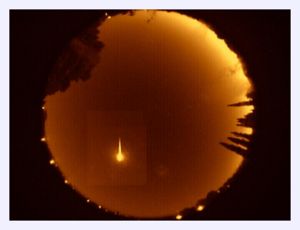
© El Paso All Sky Camera
El Paso Meteor
This movie shows asteroids observed so far by NASA's Wide-field Infrared
Survey Explorer, or WISE. As WISE scans the sky from its polar orbit,
more and more asteroids and comets are caught in its infrared vision.
The mission has surveyed about three-fourths of the sky; however, data
for only about 50 percent of the sky has been processed for asteroids
and comets at this time.
The white dots show asteroids observed by WISE - most of these are in
the Main Belt between Mars and Jupiter, and some, the Trojans, orbit in
front of, or behind, Jupiter. The red dots represent newfound near-Earth
objects, which are asteroids and comets with orbits that come
relatively close to Earth's path around the sun. The green dots are
previously known near-Earth objects observed by WISE. The yellow squares
show all comets seen by WISE so far.
As of May 24, 2010, WISE has seen more than 60,000 asteroids. It has
observed more than 70 comets, 12 of which are new, and about 200
near-Earth objects, more than 50 of which are new.
Credit: NASA/JPL-Caltech/ULCA/JHU

Did a large, icy comet smash into Neptune two
centuries ago? That's the picture that is emerging from the latest
measurements of gases in the atmosphere of the giant blue planet.
At a meeting this week of the American Astronomical Society in Miami,
Florida, Paul Hartogh, project scientist for the Herschel mission, the
European Space Agency's infrared observatory satellite, described the
mission's first results for the Solar System. These include measurements
of abnormally high levels of carbon monoxide in Neptune's stratosphere
- a possible trace of a comet impact.
Emmanuel Lellouch, an astronomer at the Paris Observatory, first
published the idea five years ago, on the basis of far less certain
measurements made by a 30-metre radio telescope on the mountain Pico
Veleta in Spain[1]. "We are becoming more confident," says Lellouch, who
is a co-author with Hartogh on a forthcoming paper concerning the
Herschel results in the journal Astronomy & Astrophysics.
A possible alternative explanation for the carbon monoxide
abundance is that Neptune has a deep, stable reservoir of the gas that
is slowly leaking out from its interior. But in his earlier
measurements, Lellouch found twice as much carbon monoxide in the
stratosphere as in the troposphere. Because the stratosphere is higher
up in the planet's atmosphere, an internal source seems less likely.
"We're certain now that there must be an external source of carbon
monoxide," says planetary physicist Leigh Fletcher of the University of
Oxford in the UK, who was not involved in the research. Earlier this
year, Fletcher published a study that describes even higher abundances
of carbon monoxide in Neptune's atmosphere, measured by the Japanese
infrared mission AKARI[2]. "The most spectacular method is having
cometary icy body impacts," he says.
Hard rain
But Fletcher says that a second external source of the carbon monoxide
is also possible: the steady rain of dust and micrometeorites that all
planets feel. When these particles are eroded in Neptune's atmosphere,
they are likely to deposit the water that they contain, along with small
amounts of carbon monoxide. Yet Lellouch found Neptune's stratosphere
to be far more enriched in carbon monoxide than water - which leads
him to favour the comet theory. That's because the temperature of a
comet impact is far higher than that for micrometeorites - providing
an environment for 'shock chemistry', in which oxygen tied up in comet
ices is liberated to form carbon monoxide.
Although Fletcher says that the chemistry of these interactions is still
poorly understood, Lellouch points to the comet Shoemaker Levy 9, which
in 1994 crashed into Jupiter and enriched its atmosphere with more
carbon monoxide than water[3].
Lellouch says that the Herschel measurements are consistent with his
original calculation[1], in which he proposed that a comet 2 kilometres
wide struck the planet 200 years ago - a size and time period that
would allow carbon monoxide to be distributed at the levels now seen in
the stratosphere.
Because it is smaller, Neptune doesn't have the gravitational attraction
of Jupiter, but its proximity to the Kuiper belt of Solar-System debris
means that large icy bodies are more likely to be nearby, says Luke
Dones, a planetary scientist at the Southwest Research Institute in
Boulder, Colorado. He suggests that a 2-kilometre comet might hit
Neptune every 2,000 years or so - which makes a strike in the
past 200 years a bit of a surprise, but "perfectly plausible"
he says.
References
1. Lellouch, E. , Moreno, R. & Paubert, G. Astron.
Astrophys. 430, L37-L40 (2005).
2. Fletcher, L. N. , Drossart, P. , Burgdorf, M. , Orton, G. S.
& Encrenaz, T. Astron. Astrophys. 514, A17 (2010).
3. Lellouch, E. et al. Icarus 159, 112-131 (2002).
El Paso Meteor
This movie shows asteroids observed so far by NASA's Wide-field Infrared
Survey Explorer, or WISE. As WISE scans the sky from its polar orbit,
more and more asteroids and comets are caught in its infrared vision.
The mission has surveyed about three-fourths of the sky; however, data
for only about 50 percent of the sky has been processed for asteroids
and comets at this time.
The white dots show asteroids observed by WISE - most of these are in
the Main Belt between Mars and Jupiter, and some, the Trojans, orbit in
front of, or behind, Jupiter. The red dots represent newfound near-Earth
objects, which are asteroids and comets with orbits that come
relatively close to Earth's path around the sun. The green dots are
previously known near-Earth objects observed by WISE. The yellow squares
show all comets seen by WISE so far.
As of May 24, 2010, WISE has seen more than 60,000 asteroids. It has
observed more than 70 comets, 12 of which are new, and about 200
near-Earth objects, more than 50 of which are new.
Credit: NASA/JPL-Caltech/ULCA/JHU

© NASA/JPL
An abundance of
carbon monoxide in Neptune's atmosphere could be the result of a comet
smash
An abundance of
carbon monoxide in Neptune's atmosphere could be the result of a comet
smash
Did a large, icy comet smash into Neptune two
centuries ago? That's the picture that is emerging from the latest
measurements of gases in the atmosphere of the giant blue planet.
At a meeting this week of the American Astronomical Society in Miami,
Florida, Paul Hartogh, project scientist for the Herschel mission, the
European Space Agency's infrared observatory satellite, described the
mission's first results for the Solar System. These include measurements
of abnormally high levels of carbon monoxide in Neptune's stratosphere
- a possible trace of a comet impact.
Emmanuel Lellouch, an astronomer at the Paris Observatory, first
published the idea five years ago, on the basis of far less certain
measurements made by a 30-metre radio telescope on the mountain Pico
Veleta in Spain[1]. "We are becoming more confident," says Lellouch, who
is a co-author with Hartogh on a forthcoming paper concerning the
Herschel results in the journal Astronomy & Astrophysics.
A possible alternative explanation for the carbon monoxide
abundance is that Neptune has a deep, stable reservoir of the gas that
is slowly leaking out from its interior. But in his earlier
measurements, Lellouch found twice as much carbon monoxide in the
stratosphere as in the troposphere. Because the stratosphere is higher
up in the planet's atmosphere, an internal source seems less likely.
"We're certain now that there must be an external source of carbon
monoxide," says planetary physicist Leigh Fletcher of the University of
Oxford in the UK, who was not involved in the research. Earlier this
year, Fletcher published a study that describes even higher abundances
of carbon monoxide in Neptune's atmosphere, measured by the Japanese
infrared mission AKARI[2]. "The most spectacular method is having
cometary icy body impacts," he says.
Hard rain
But Fletcher says that a second external source of the carbon monoxide
is also possible: the steady rain of dust and micrometeorites that all
planets feel. When these particles are eroded in Neptune's atmosphere,
they are likely to deposit the water that they contain, along with small
amounts of carbon monoxide. Yet Lellouch found Neptune's stratosphere
to be far more enriched in carbon monoxide than water - which leads
him to favour the comet theory. That's because the temperature of a
comet impact is far higher than that for micrometeorites - providing
an environment for 'shock chemistry', in which oxygen tied up in comet
ices is liberated to form carbon monoxide.
Although Fletcher says that the chemistry of these interactions is still
poorly understood, Lellouch points to the comet Shoemaker Levy 9, which
in 1994 crashed into Jupiter and enriched its atmosphere with more
carbon monoxide than water[3].
Lellouch says that the Herschel measurements are consistent with his
original calculation[1], in which he proposed that a comet 2 kilometres
wide struck the planet 200 years ago - a size and time period that
would allow carbon monoxide to be distributed at the levels now seen in
the stratosphere.
Because it is smaller, Neptune doesn't have the gravitational attraction
of Jupiter, but its proximity to the Kuiper belt of Solar-System debris
means that large icy bodies are more likely to be nearby, says Luke
Dones, a planetary scientist at the Southwest Research Institute in
Boulder, Colorado. He suggests that a 2-kilometre comet might hit
Neptune every 2,000 years or so - which makes a strike in the
past 200 years a bit of a surprise, but "perfectly plausible"
he says.
References
1. Lellouch, E. , Moreno, R. & Paubert, G. Astron.
Astrophys. 430, L37-L40 (2005).
2. Fletcher, L. N. , Drossart, P. , Burgdorf, M. , Orton, G. S.
& Encrenaz, T. Astron. Astrophys. 514, A17 (2010).
3. Lellouch, E. et al. Icarus 159, 112-131 (2002).
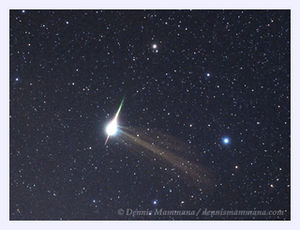
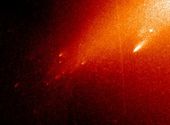
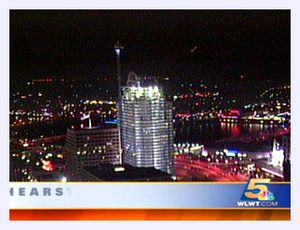
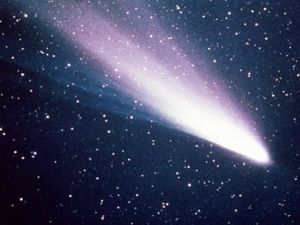
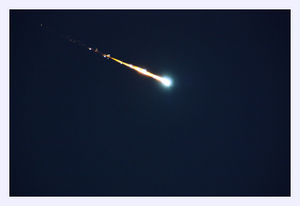


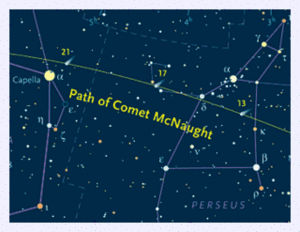

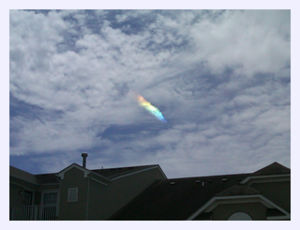
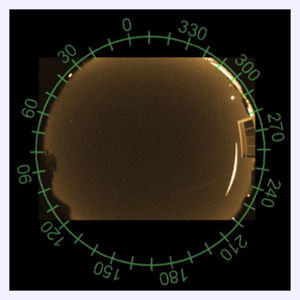
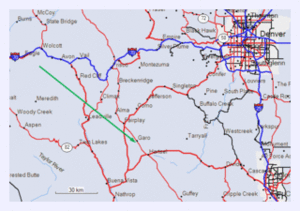
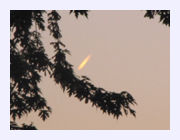
2 comments:
I just wanted to say that I have enjoyed your blog for a while now. I was wondering if I may link to it on my forum from time to time? No plagarism, just quoting and direct link, but won't if it is not ok with you.
either way, please keep up the good work. I am a novice, but I learn a lot from your blog.
Yes, of course. You are welcome to link to this blog or to any of the articles on SOTT.net.
We are very happy when people find our work to be useful. And since it is also such an important information, better to spread it far and wide.
Could you please provide a link to your forum? Thanks a lot.
Post a Comment